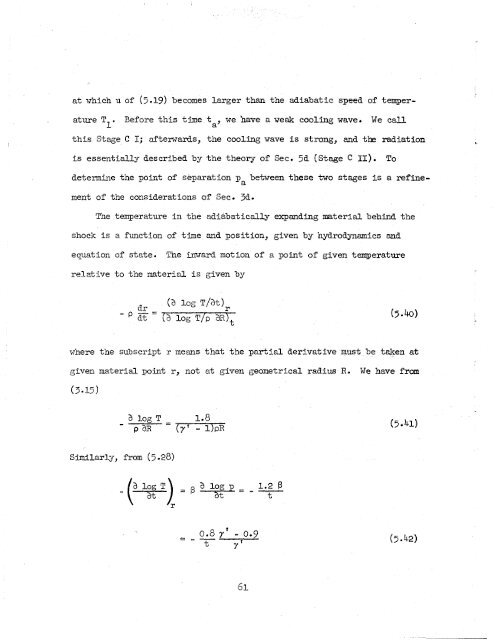Theory of the Fireball
Theory of the Fireball
Theory of the Fireball
Create successful ePaper yourself
Turn your PDF publications into a flip-book with our unique Google optimized e-Paper software.
at which u <strong>of</strong> (5 .IS) becomes larger than t'le adiabatic speed <strong>of</strong> temper-<br />
ature T Before this time ta, we 'have a weak cooling wave . We call<br />
1'<br />
this Stage C I; afterwards, <strong>the</strong> cooling wave is strong, and <strong>the</strong> radiation<br />
is essentially described by <strong>the</strong> <strong>the</strong>ory <strong>of</strong> Sec. 5d (Stage C 11) . To<br />
determine tine point <strong>of</strong> separation p between <strong>the</strong>se two stages is a refinea<br />
ment <strong>of</strong> <strong>the</strong> considerations <strong>of</strong> Sec. 3d.<br />
Tne temperature in <strong>the</strong> adiiibatically expanding material behind <strong>the</strong><br />
shock is a function <strong>of</strong> time and position, given by nydrodynamics and<br />
equation <strong>of</strong> state. The imrard motion <strong>of</strong> a point <strong>of</strong> given temperature<br />
rel-ative to <strong>the</strong> material is given by<br />
tfnere <strong>the</strong> subscript r means that <strong>the</strong> partial derivative must be talcen at<br />
given material point r, not at given geometrical radius R. We have from<br />
(3.15)<br />
61
















